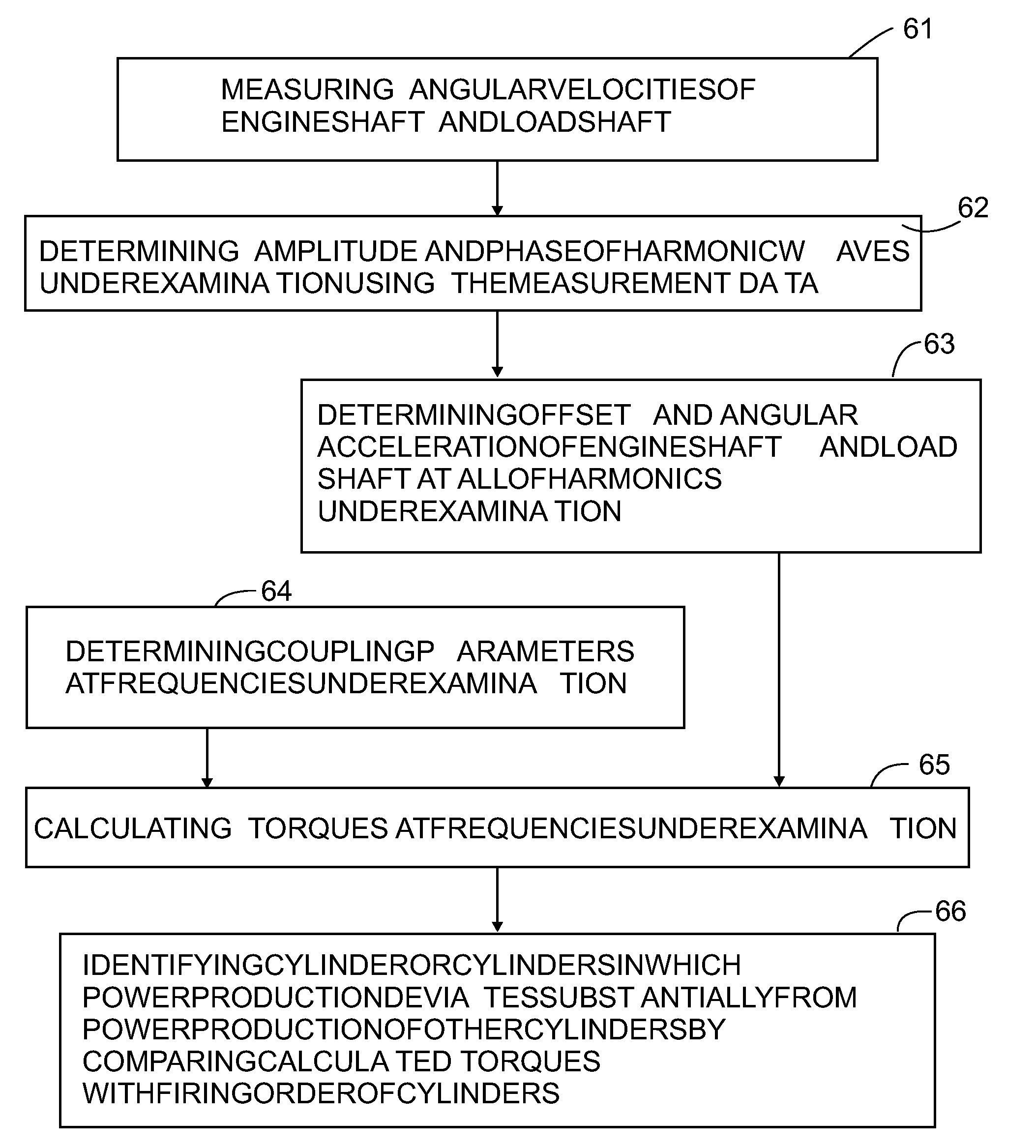Apparatus for Identifying a Non-Uniform Share of Cylinder Power in an Internal Combustion Piston Engine System
a technology of internal combustion piston engine and cylinder power, which is applied in the direction of machines/engines, electric control, instruments, etc., can solve the problems of increasing the level of engine vibration, non-uniform power production, and torsional stress on the crankshaft of the engin
- Summary
- Abstract
- Description
- Claims
- Application Information
AI Technical Summary
Benefits of technology
Problems solved by technology
Method used
Image
Examples
Embodiment Construction
[0021]FIG. 1 illustrates an example of the torques of one cylinder in a four-stroke diesel engine, originating from the combustion of fuel and the rotation of mass. The gas torque is illustrated with a solid line, the mass torque with a dot-and-dash line and the tangential torque with a dashed line. The gas torque illustrates the torque originating from the combustion of fuel inside the cylinder. The mass torque originates from the reciprocating motion of the piston in the cylinder and the rotating movement of the crank mechanism. The tangential torque is the sum of the gas and mass torques effective on the engine's crankshaft. In a normal four-stroke multiple-cylinder internal combustion piston engine, the cycle of each cylinder takes two crankshaft rotations—that is, 720 degrees. It can be seen from the figure that the torque is at its highest during the power stroke and at its lowest during the compression stroke of the cylinder.
[0022]The torque curves of FIG. 1 are periodically ...
PUM
 Login to View More
Login to View More Abstract
Description
Claims
Application Information
 Login to View More
Login to View More - R&D
- Intellectual Property
- Life Sciences
- Materials
- Tech Scout
- Unparalleled Data Quality
- Higher Quality Content
- 60% Fewer Hallucinations
Browse by: Latest US Patents, China's latest patents, Technical Efficacy Thesaurus, Application Domain, Technology Topic, Popular Technical Reports.
© 2025 PatSnap. All rights reserved.Legal|Privacy policy|Modern Slavery Act Transparency Statement|Sitemap|About US| Contact US: help@patsnap.com



